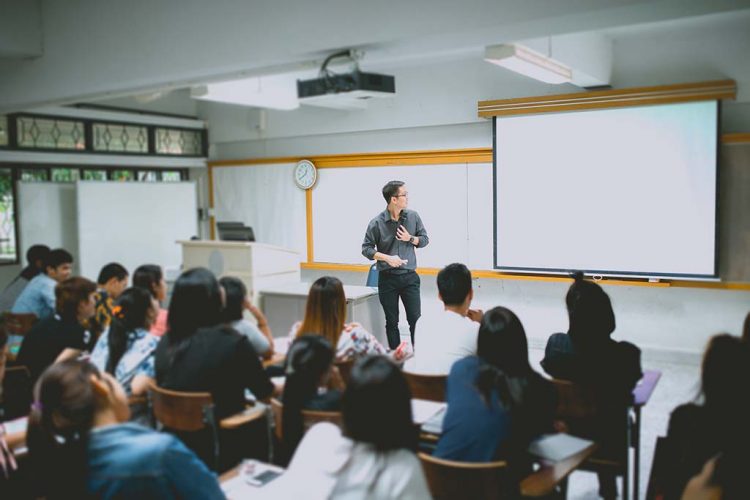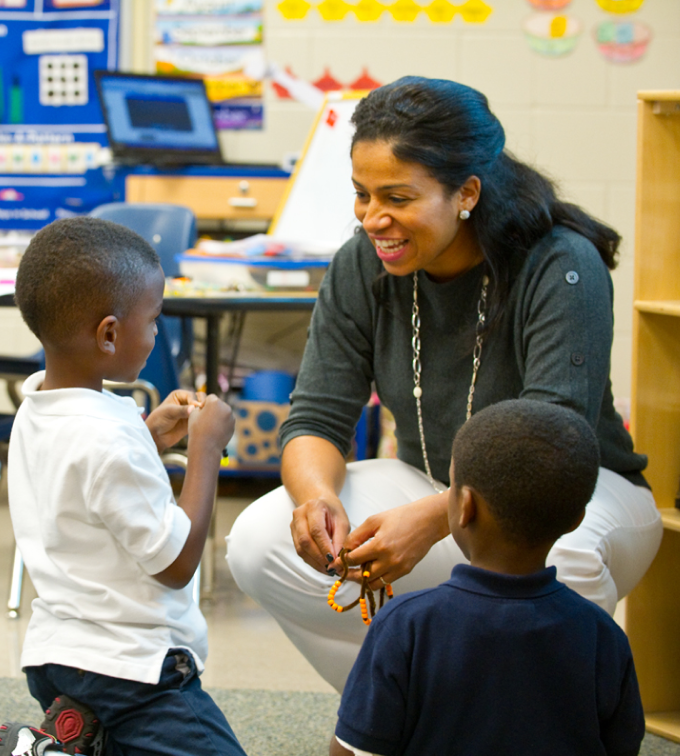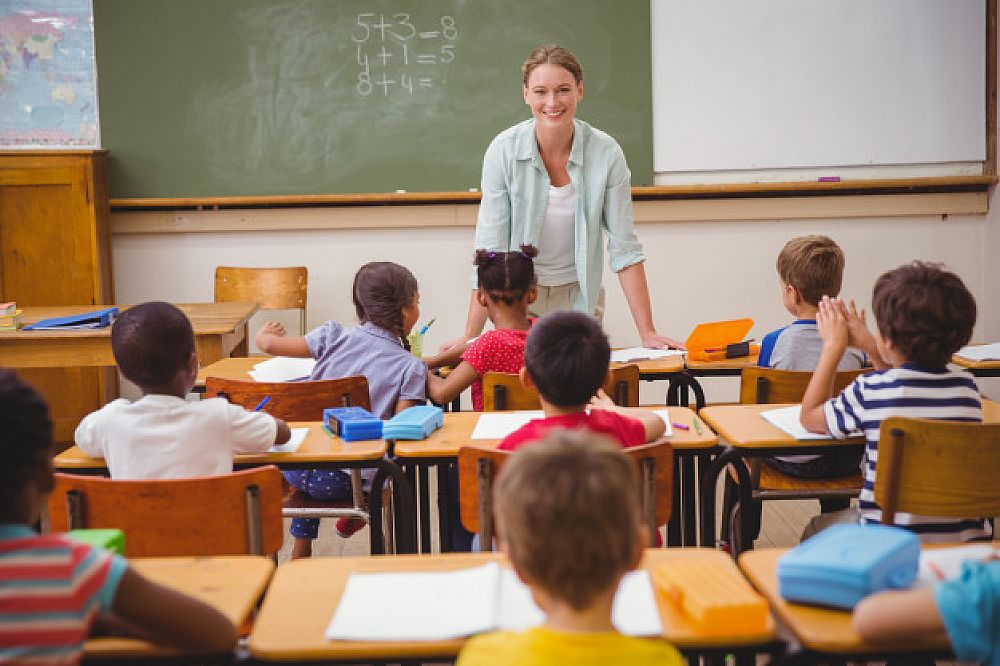Exploring the Various Training Approaches in Main Scientific Research Education And Learning Today
Inquiry-based discovering, hands-on experiments, and the integration of innovation are redefining just how educators involve young minds. In addition, collective techniques and differentiated guideline are being used to cater to the varied requirements of trainees, boosting both interaction and understanding.
Inquiry-Based Understanding
Inquiry-Based Knowing (IBL) is an instructional strategy that encourages students to explore clinical ideas with wondering about, examination, and hands-on trial and error. This method emphasizes the role of trainees as active participants in their discovering, advertising essential thinking and problem-solving abilities. By engaging with real-world inquiries, pupils come to be interested and inspired, which enhances their understanding of clinical principles.
In IBL, instructors function as facilitators, leading students as they navigate their questions instead of providing details directly. This student-centered strategy allows for differentiation, fitting numerous finding out styles and speeds. Students develop skills in formulating hypotheses, designing experiments, and evaluating data, which are vital for clinical proficiency.
Furthermore, IBL promotes partnership among students, urging them to share findings and ideas. This collective inquiry advertises social abilities and a sense of community within the class. In addition, the procedure of query encourages resilience, as pupils discover to embrace failing as a tipping stone toward understanding.
Hands-On Experiments
Hands-on experiments are a crucial element of effective scientific research education and learning, matching the principles of inquiry-based knowing. These experiments allow students to involve straight with scientific ideas, promoting a deeper understanding with experiential learning. By adjusting products and observing results, young students can understand abstract concepts in tangible means.
Such activities advertise vital reasoning and analytical abilities, as trainees assume results, conduct experiments, and analyze outcomes. This process urges them to ask concerns, improve their understanding, and develop a clinical state of mind. Hands-on experiments can be tailored to varied knowing styles, making certain that all students have the possibility to engage meaningfully with the web content.
Furthermore, hands-on experiments typically motivate partnership amongst peers, promoting team effort and communication abilities. Operating in groups enables trainees to share concepts, review searchings for, and gain from each other, which enhances their overall academic experience.
Including hands-on experiments into the main science educational program not only enriches the finding out atmosphere but also cultivates a lifelong interest in scientific research. By actively taking part in their education, students are much more likely to develop a passion for scientific questions that expands past the class.

Technology Combination
Integrating modern technology right into key scientific research education and learning has actually ended up being significantly crucial in fostering pupil involvement and boosting finding out outcomes. Making use of digital tools, such as interactive simulations, online labs, and academic software program, gives students with chances to check out scientific concepts in cutting-edge methods. These sources help with a deeper understanding of complicated subjects by allowing students to envision and adjust variables that would certainly be unwise in a typical class setup.
Furthermore, innovation combination encourages personalized finding out experiences. Pupils can progress at their own rate, taking another look at challenging concepts with multimedia resources, which deal with different learning designs. This adaptability not only sustains private development however additionally cultivates a feeling of autonomy in students.
Furthermore, innovation serves as a bridge to real-world science, attaching pupils with existing research and professional payments. Access to clinical journals and on-line databases widens students' perspectives on scientific questions and cultivates crucial thinking skills.
Collaborative Knowing
Collective understanding plays an important function in primary science education by promoting team effort and interaction skills amongst students. This technique encourages learners to function with each other, share knowledge, and participate in analytic, which boosts their understanding of scientific concepts. By getting involved in group activities, pupils learn to verbalize their concepts, listen to diverse point of views, and bargain remedies, every one of which are essential abilities in both real-world and academic contexts.

Research study suggests that collective discovering can cause enhanced motivation and involvement in science topics, as trainees find pleasure in shared experiences (primary science tuition Singapore). Furthermore, this approach prepares trainees for future joint endeavors, equipping them with the skills essential for effective team effort in college and expert atmospheres. Inevitably, embracing collaborative discovering in key scientific research education can significantly enhance the discovering experience and this contact form advertise a much deeper understanding of scientific inquiry
Set Apart Guideline

Distinguished direction can materialize in different means, such as differing the material, procedures, or items of learning. For example, instructors may make use of tiered assignments that offer varying levels of complexity, allowing trainees to operate at their particular preparedness degrees. In addition, flexible grouping approaches can facilitate collaboration among students with various capabilities, fostering peer learning.
Analysis plays a critical duty in this technique, as it informs guideline and assists teachers understand each pupil's distinct needs. Developmental assessments, such as quizzes and monitorings, can assist instructors in adjusting their strategies to boost discovering outcomes. primary science tuition Singapore. Inevitably, by applying distinguished instruction in primary scientific research education and learning, teachers can grow a much more effective and fair understanding atmosphere, encouraging all students to reach their full potential in understanding clinical phenomena
Verdict
In recap, the varied teaching strategies in main science education and learning, consisting of inquiry-based knowing, hands-on experiments, innovation integration, collective understanding, and distinguished guideline, jointly add to a much more effective discovering setting. These methods promote crucial reasoning, analytic abilities, and a much deeper understanding of clinical principles. By implementing these strategies, teachers can produce supportive and appealing classrooms that deal with the varied needs of students, eventually promoting a long-lasting passion in scientific directory research and boosting academic success.
Inquiry-Based Knowing (IBL) is a pedagogical strategy that motivates pupils to explore clinical ideas with doubting, investigation, and hands-on experimentation.Collaborative understanding plays an essential function in main science education and learning by promoting team here are the findings effort and communication abilities amongst trainees.Research indicates that collaborative learning can lead to increased inspiration and interaction in science topics, as pupils locate satisfaction in shared experiences.In fostering an inclusive learning environment, separated direction emerges as a key strategy to suit the varied requirements and abilities of students in primary science education. Inevitably, by applying separated direction in main science education, teachers can cultivate a more efficient and equitable learning setting, equipping all trainees to reach their full potential in comprehending clinical sensations.